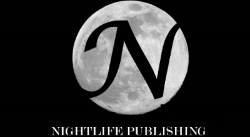This is the third and final installment of my essay on mass shootings in America. If you’d like to read parts one and two, you can find the links below:
Part One: The Pro-Gun Side
Part Two: The Anti- Gun Side
If more guns aren’t the answer and fewer guns isn’t the answer and ignoring the problem isn’t the answer, then what is the answer?
We have a training model and technology that can protect unarmed civilians without plodding through the mire of gun control law. The answer for schools, malls and businesses of any kind is creating and supporting a rapid evacuation program.
What is a Rapid Evacuation Program?
If a school catches fire, we do not expect teachers to put out the fire. We teach them to get the children out of the school safely. In offices, hotels and public buildings, we don’t leave fire safety to chance. We have professionals in place that monitor systems, drill the population and coordinate with first responders. I am simply suggesting expanding the fire prevention program to cover mass shootings. My idea includes the following parts:
Each school would have an evacuation professional whose job included:
- Creating and updating the evacuation plan
- Monitoring the evacuation systems,
- Patrolling the area to ensure exits, barriers and security screening systems are in place,
- Periodically training everyone with evacuation drills to ensure information is distributed,
- Leading an evacuation in the case of an emergency,
- Coordinating with first responders and managing the media
Each school would also be connected to a central monitoring system similar to ADP. This system could remotely monitor the school and the surrounding area with cameras and other devices to aid the evacuation professional on the ground and coordinate with first responders in the event of an emergency
The schools would conduct regular evacuation drills that differ from fire drills because they take into account the specific skills needed for dealing with an active shooter. This will reduce the likelihood of a fatal loop in the OODA cycle because the children and teachers will know what to do.
Finally, the evacuation professional should have non-lethal tools and deterrents (tasers, smoke grenades etc.) in the event that he or she has to engage the killer to ensure the evacuation of the children. But the primary duty would always be removing as many children as possible from the danger area.
What a Rapid Evacuation Program Can Do
Rapid evacuation can be useful because it deals directly with the issue of protecting people from mass shootings.
- It does not require an excess of political will to alter laws or society’s attitudes about a contentious subject.
- It does not require extensive money to alter or fortify institutions.
- It can be implemented in malls, schools, churches and buildings of all kinds.
- It uses the same training model we are already used to and modifies it for an increasingly frequent problem.
- It can be used to help move people out of a dangerous area in the event of floods, earthquakes, or violent individuals.
- It doesn’t make assumptions or ignore the reality of American society.
- It can deter mass shootings and reduce the death toll when and if the deterrence fails.
What It Can’t Do
Of course the difference between dealing with fire and dealing with a killer is the human variable. Fire conforms to certain predicable, natural laws while a killer can act in ways that no evacuation program can anticipate. I’m not suggesting that rapid evacuation is the last word in dealing with mass murderers. It is likely that law enforcement and potential evacuation professionals will have to improve and adapt their methods as killers alter their attacks. But that struggle would be minor compared to the devastation that we have to endure when people are gunned down at random. Rapid evacuation programs can protect our children while the war of words surrounding guns continues.
Best
Gamal














